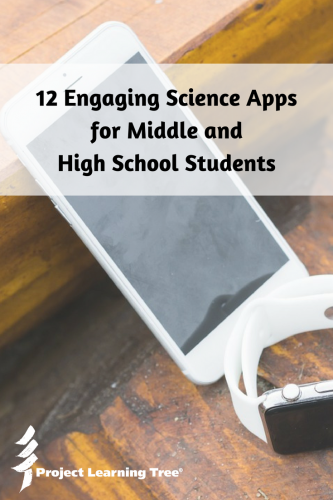 Technology is an integral part of our lives, and you may be looking for more ways to incorporate technology into your classroom.
Technology is an integral part of our lives, and you may be looking for more ways to incorporate technology into your classroom.
If you have access to tablets, there are many educational apps that you can integrate into lesson plans.
We’ve pulled together 12 free science apps for middle and high school students. We focused on topics such as climate change, trees, conservation, and weather, which complement Project Learning Tree’s lesson plans. The apps in this list include stand-alone games, interactive teaching tools, and reference guides.
Here’s the list:
Carbon Capture
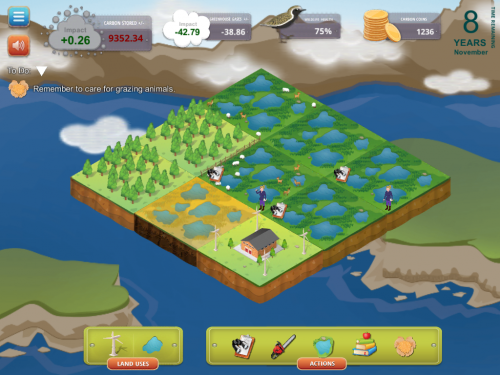 Peatlands – land that consists largely of peat or peat bogs – cover about 3% of the Earth’s land surface. They play a role in fighting climate change by storing carbon and keeping it out of the atmosphere.
Peatlands – land that consists largely of peat or peat bogs – cover about 3% of the Earth’s land surface. They play a role in fighting climate change by storing carbon and keeping it out of the atmosphere.
The Peatlands Partnership initiative created a game called “Carbon Capture” as part of the Flows to the Future project. In this game, students become a peatlands manager and their job is to protect the peatlands and store as much carbon as possible. They juggle many activities such as farming, tourism, and maintaining the natural habitat.
This 8-minute game has three levels of difficulty, so they can choose whether to manage the peatlands over a span of 15, 20, or 25 years.
Available on iOS (iPhone and iPad) and Android.
Code Carbon
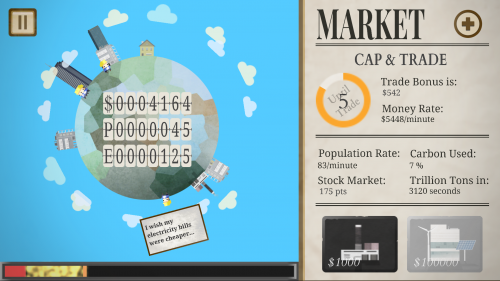 Developed by a team of high school students, this game simulates many of the complex issues related to climate change. Players balance energy usage, population, money, and pollution.
Developed by a team of high school students, this game simulates many of the complex issues related to climate change. Players balance energy usage, population, money, and pollution.
This app has educational components built into the game including environmental science terminology, visual climate change comprehension, cause and effect relationships, and the relationship between climate change and the economy.
Code Carbon helps students understand the economic, political, and environmental impact of their decisions.
Available on iOS (iPhone and iPad) and Android.
Earth Now
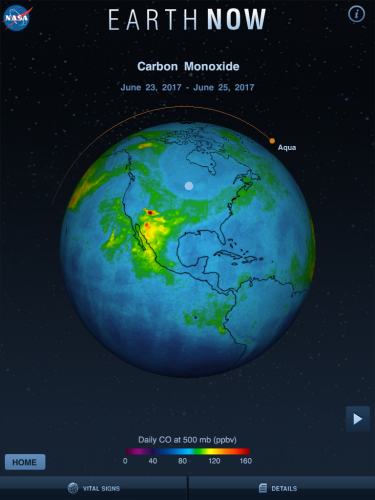 NASA’s Earth Now app shows visual representations of climate data from Earth science satellites.
NASA’s Earth Now app shows visual representations of climate data from Earth science satellites.
Students can see a visual representation of the Earth’s air temperature, carbon dioxide levels, carbon monoxide levels, gravity field, ozone, sea level, soil moisture and salinity, and water vapor.
The app also includes explanations, a daily average, a 3-day average, and an animated visualization of data from the past week.
This app would be a useful tool to reference throughout the year in lessons related to the atmosphere and changes in our climate.
Available on iOS (iPhone and iPad) and Android.
Global Change
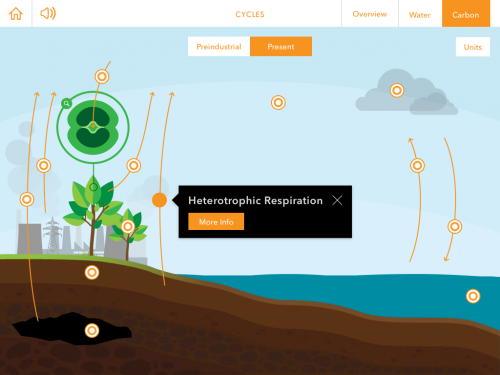 The Global Change app is a teaching tool to show the relationships between global carbon and water cycles.
The Global Change app is a teaching tool to show the relationships between global carbon and water cycles.
The app includes a short introduction video, a detailed explanation of stomata (a part of the plant that let’s in CO2, which is needed for photosynthesis), and interactive representations of the carbon and water cycles.
In the carbon and water cycle charts, students can click on each element for more information, including useful links to external websites. There is also connections to climate change, so students can explore how rising temperatures have impacted the carbon and water cycles since the industrial revolution.
Available on iOS (iPhone and iPad) and Android.
Want more resources for a lesson on the carbon cycle?
Download a free Carbon in Action worksheet.
Globe Observer
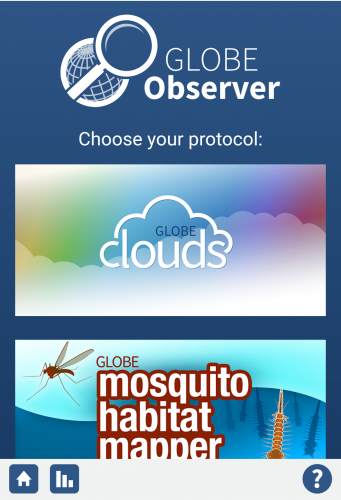 Students using this app can help scientists understand the satellite data collected by NASA from space. By using this app, students can participate in hands-on observations that contribute to the scientific community and global health.
Students using this app can help scientists understand the satellite data collected by NASA from space. By using this app, students can participate in hands-on observations that contribute to the scientific community and global health.
This app has two opportunities for students to contribute through collecting data about clouds and mosquito habitats.
If students record cloud observations while a satellite is over your location, your data can be used to verify satellite measurements. You can even set up alerts within the app so you know when to collect the data.
The data for the mosquito habitat mapper are shared with public health, government, and scientific institutions. Students can identify potential habitats, sample and count the larvae, identify the type of larvae, and help eliminate breeding habitats.
Available on iOS (iPhone and iPad) and Android.
Leaf Snap
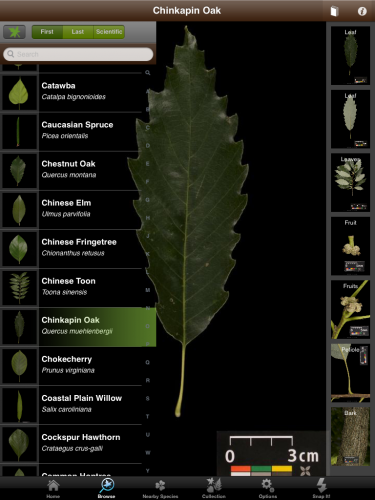 This app is an electronic field guide developed by researchers from Columbia University the University of Maryland, and the Smithsonian.
This app is an electronic field guide developed by researchers from Columbia University the University of Maryland, and the Smithsonian.
Use this app to browse information about trees from the New York City and Washington D.C. area (trees of the entire continental U.S. coming soon). It includes the scientific name, a short description of the species, its habitat, bloom time, longevity, a photo of the leaf and flower or fruit, and a map of where it can be found in the U.S.
You can also see nearby trees that were labeled by other Leafsnap users and create your own leaf collection.
Available on iOS (iPhone and iPad).
Offset
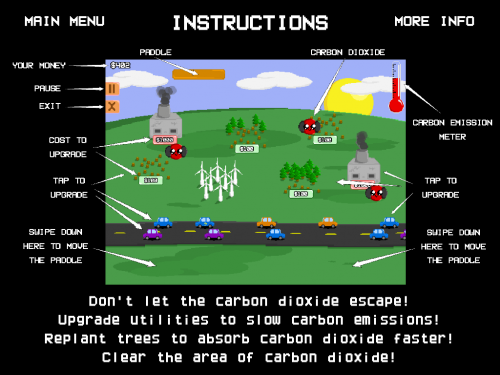 This educational game developed by NASA can help students apply their knowledge about the carbon cycle and climate change.
This educational game developed by NASA can help students apply their knowledge about the carbon cycle and climate change.
The goal is to not let carbon dioxide escape into the atmosphere. Students balance reforestation efforts and converting power plants and cars to run on renewable energy sources. Every time carbon dioxide escapes, the temperature goes up. If the temperature rises too much, the game is over.
The app also includes background information about the greenhouse effect and the carbon cycle, and how NASA is monitoring greenhouse gases.
Available on iOS (iPhone and iPad).
Oroeco
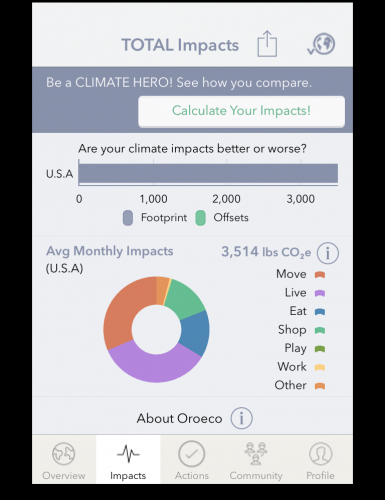 Oroeco is an app that helps you track your carbon footprint. Get ideas for reducing your climate footprint, and track actions such as eating vegetarian, recycling, turning off the lights, carpooling, using reusable bags, and eating local foods.
Oroeco is an app that helps you track your carbon footprint. Get ideas for reducing your climate footprint, and track actions such as eating vegetarian, recycling, turning off the lights, carpooling, using reusable bags, and eating local foods.
You can also analyze your impact with interactive graphs, see how your actions compare with other users, earn badges, and challenge your friends to reduce their impact.
When you connect to the community, you can also see the footprints of your friends and the actions they’re taking.
Available on iOS (iPhone only) and Android.
Space Science Investigations: Plant Growth
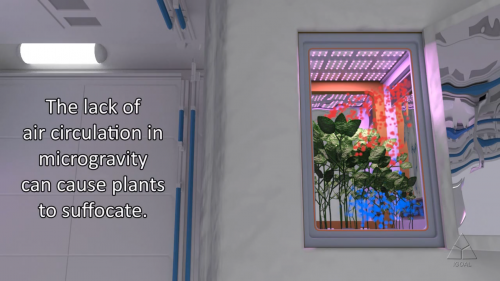 NASA’s Plant Growth app helps students learn about the elements that plants need to thrive by growing them in space.
NASA’s Plant Growth app helps students learn about the elements that plants need to thrive by growing them in space.
Through the interactive game, students learn how micro-gravity, light, and water affects plant growth in space. By studying how plants grow in this unique environment, we can better understand the crucial elements plants need on Earth.
The app also includes plant growth experiments for at home or in the classroom.
Available on iOS (iPhone and iPad) and Andriod.
Survive Global Climate Change
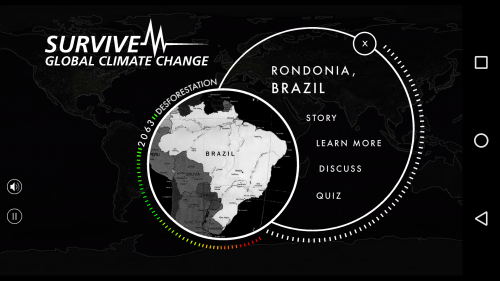 This educational app includes stories about what the world might look like in 2063 if we do nothing to fight climate change today. Students can explore the effects of climate change in Canada, the U.S., Brazil, the U.K., and the Maldives.
This educational app includes stories about what the world might look like in 2063 if we do nothing to fight climate change today. Students can explore the effects of climate change in Canada, the U.S., Brazil, the U.K., and the Maldives.
Links to more information, quizzes, and discussion questions are also included.
Available on iOS (iPhone and iPad) and Android.
Trees Pro
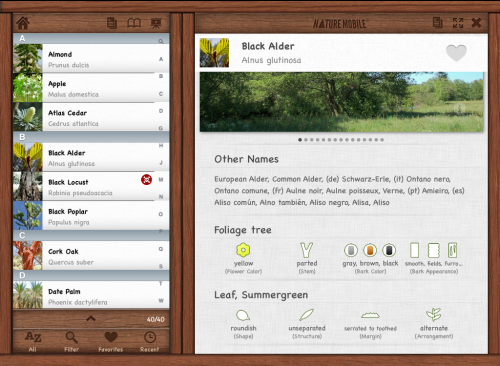 Trees Pro includes easy-to-understand information about common types of trees such as the foliage, fruit, leaves, and other characteristics. The app also includes quizzes so students can test their new knowledge.
Trees Pro includes easy-to-understand information about common types of trees such as the foliage, fruit, leaves, and other characteristics. The app also includes quizzes so students can test their new knowledge.
Students can identify tree species on school grounds, at a park, or at a nature reserve by searching by appearance, fruit type, and habitat.
The free version includes 40 species, and you can upgrade to the full version that contains more than 160 species.
Available on iOS (iPhone and iPad).
Water Wiz
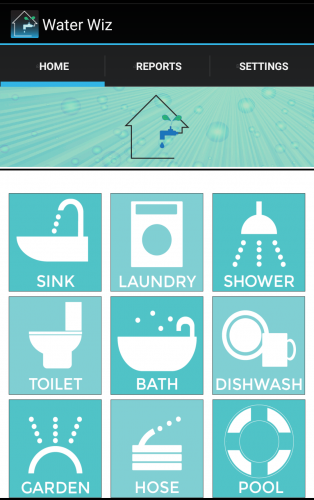 Students working on water use projects will find this Water Wiz app helpful in tracking water usage.
Students working on water use projects will find this Water Wiz app helpful in tracking water usage.
The app is designed for households, but you could also apply this app’s tracking system to classrooms.
If you live in an area that has mandatory water use cuts, this app can help you estimate how close you are to your limit. You can also connect other family members so you can see how water is being used by everyone in your household.
The app also includes reports on water usage by month, as well as daily summaries and monthly water usage projections.
Available on iOS (iPhone and iPad) and Android.
Let us know – are there any apps in this list you’re going to try out with your students? Or are there any other educational apps you recommend?



One comment on “12 Engaging Science Apps for Middle and High School Students”
Thanks for the resources! FYI, the Survive Global Climate Change app does not work with iOS 11.